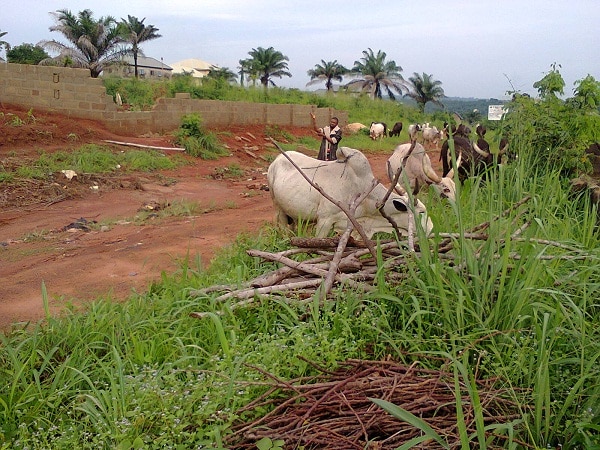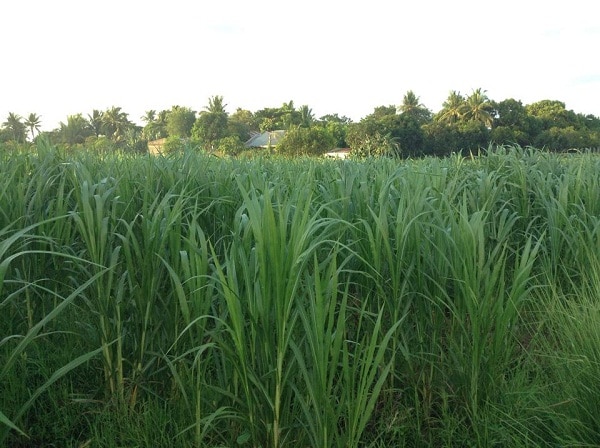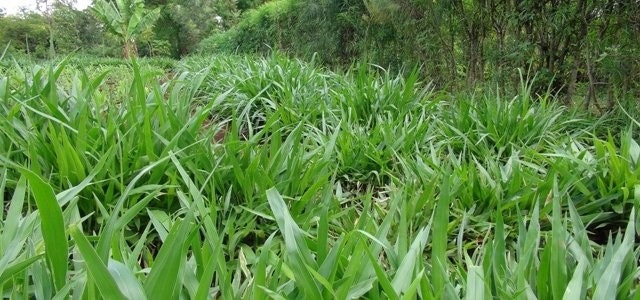When it comes to ruminant farming, Nigeria still practice the archaic system of nomadic grazing and cut-and-carry system from bushes. In countries like Kenya, livestock farmers grow grass to feed their animals. Many Nigerians may find this laughable but it is far better than what we’re used to.
Growing your own grass means that you are sure that feed supply will be enough to meet your animals’ need. It is also hygienic. When I was young, we had some goats and I was the one that feed them. I normally went to bushes to cut grass. One thing that worried me so much is the eye-sores I normally encounter. I would always have to cope with the sight of human feces here and there. In fact, that was the main thing that discouraged me from goat farming.
Now that I have discovered grass growing, rearing ruminants now look very attractive. I can grow the grass during the rainy season and preserve excess by making hay or silage with them. Even with the excessive rainfall, hay can still be made with an artificial dryer and the grass don’t need to be dried to make silage. In addition to grass, one can also grow leguminous plants like desmodium, stylosanthes guianensis etc to serve as a protein source.
This short article is about 3 high yield, high protein grasses that I find very interesting. If you will excel in livestock farming, you need something like this. A mature dairy cow needs about 50-70kg Napier grass per day, in addition to about 1/3rd legumes and supplements (concentrate and minerals). 50-70kg grass per day is huge (this amount will feed about 7-10 goats), so you’ll need a high-yielding grass to excel. And you’ll have to grow it yourself. Supply from bushes is not just reliable neither is it hygienic.
The first is the Giant Napier Grass. Below are some facts about it:
1. It was released by Kenya Agricultural Research Organization (KALRO). They call it the giant Napier grass.
2. Yield can be up to 100 tons/acre/yr. (fresh matter basis). The local varieties yield 50-60t/acre/yr. In well-drained fertile soils, harvest can exceed 100t/acre/yr.
3. It is tolerant to drought, and can give 100t/acre/yr in regions with as little as 150mm rain per annum. With irrigation, yield will increase dramatically.
4. Protein content is up to 25% (dry matter basis) compare to 8.3% for local variety.
5. Harvest starts 3 months after planting compare to 4 months for local variety. It is ready for harvest when the stalk-cane part is 2 to 3 feet tall. At this stage, nutrient content is at the highest level.
6. It is easy to chew and nutritious even with hardened stalks; so no wastage.
7. It can be propagated by splits or canes. Splits are best for Tumbukiza while canes require terrace-like drills.
The second is the Pakchong1 Super Napier
It is a Hybrid Napier Grass obtained by crossing Elephant Grass and Pearl Millet. It has the following characteristics:
1. Developed by Dr. Krailas Kiyothong of the Department of Livestock Development, Thailand
2. It can be harvested every 45 to 48 days and can last for 8-30 years. First harvest occur 3 months after planting.
3. Crude protein: 14-18%
4. Yield 200t/acre/year
5. Its high WSC 18 (water soluble carbohydrate) makes it possible for it to be turn into silage without any carbohydrate source.
6. It can be grown in drought-prone areas
According to the source, the Pakchong1 Super Napier can be ordered through the following contacts:
Phone: +919488932336.
E Mail: kaverigoatform@gmail.com.
https://www.facebook.com/kaveri.goarfarm
The 3rd grass is even better than Napier grass. It is the Brachiaria grass. Below are some interesting facts about it:
1. It looks like napier/elephant grass from a distance. But on a closer look you’ll see that is has thicker leaves and does not have irritating hairs like Napier grass. Brachiaria also produce seeds unlike Napier grass, and the seeds do not lose their hybrid vigor, meaning that you can plant the seeds and get good result.
2. It originates from Africa, but has been improved in South America into a grass with better yield and pest resistance.
3. It has more than 15% crude protein on a dry matter basis. It can reach 20% with good management.
4. It grows fast with less water producing 18 to 20 tonnes of green forage per acre per harvest.
5. It tolerate dry conditions better than Napier grass.
6. Unlike Napier grass, Brachiaria grass does not take up lots of nutrients from the soil. It will perform better in poor soils.
7. Napier grass is vulnerable to diseases like Napier stunt and Napier smut diseases. These diseases are threatening Kenya dairy industry. Brachiaria is resistant to these diseases.
8. There are two varieties of Brachiaria, namely Mulato and Mulato II, produced by International Center for Tropical Agriculture (CIAT).
9. With Napier grass, the animals can’t graze on it because growth after trampling is poor. This is not so with Brachiaria. They regrow fast after grazing and save you time of cutting and carrying the grass to the animals. However, you should not over-graze them.
10. Brachiaria can be propagated by seeds, root splits and stems. Mulato Brachiaria is best propagated by seeds, though it can also be planted from vegetative material. If you want to plant large area of land, it is better to use seeds. You’ll need 2.5-3kgs seeds per acre.
11. Where to buy: You can buy the seeds from any KALRO branch in Kenya. They will also advice you on the best seeds that will suit your ecological zone.
12. Once the grass has establish, you can harvest it every 3-4 weeks, when the nutrient content is highest.
If you’re interested in planting any of these grass, read this article for management practices – Tumbukiza method: An Effective Way of Growing Grass.
Conclusion
Having known these, the next thing is to find how to get the splits, canes or seeds. I remembered when Nigeria planned to import improved grass seeds for proposed cattle ranches but I don’t think it was successful. This makes acquiring an improved grass for my proposed ruminant farm harder. But should I wait until I get it before I start? I don’t think so. I will start with local grasses and get rid of them whenever I find a better grass. I will update you guys when I succeed, meanwhile, if anyone know where I can buy improved grass in Nigeria, please help me. I will consider importing at a later time.
Sources
Brachiaria termed better than Napier in push-pull technology



Yes you have helped. But where can I get these species around Abuja?
Best way to get that info is by contacting animal research institute. Qhen I am ready I will do the same.
I was fortunate to get a sack of brachiaria seed when i started my dairy farm. It is a truly wonderful grass, fast growing lush, easy to handle, dry weather tolerant and highly nutritious and loved by animals. I have some seed from my last harvest you can contact me (Seyi) on 07063463851
Interesting. I will contact you.